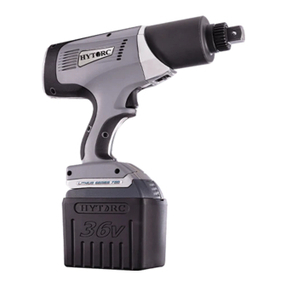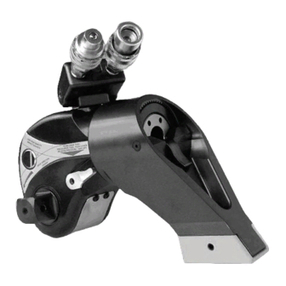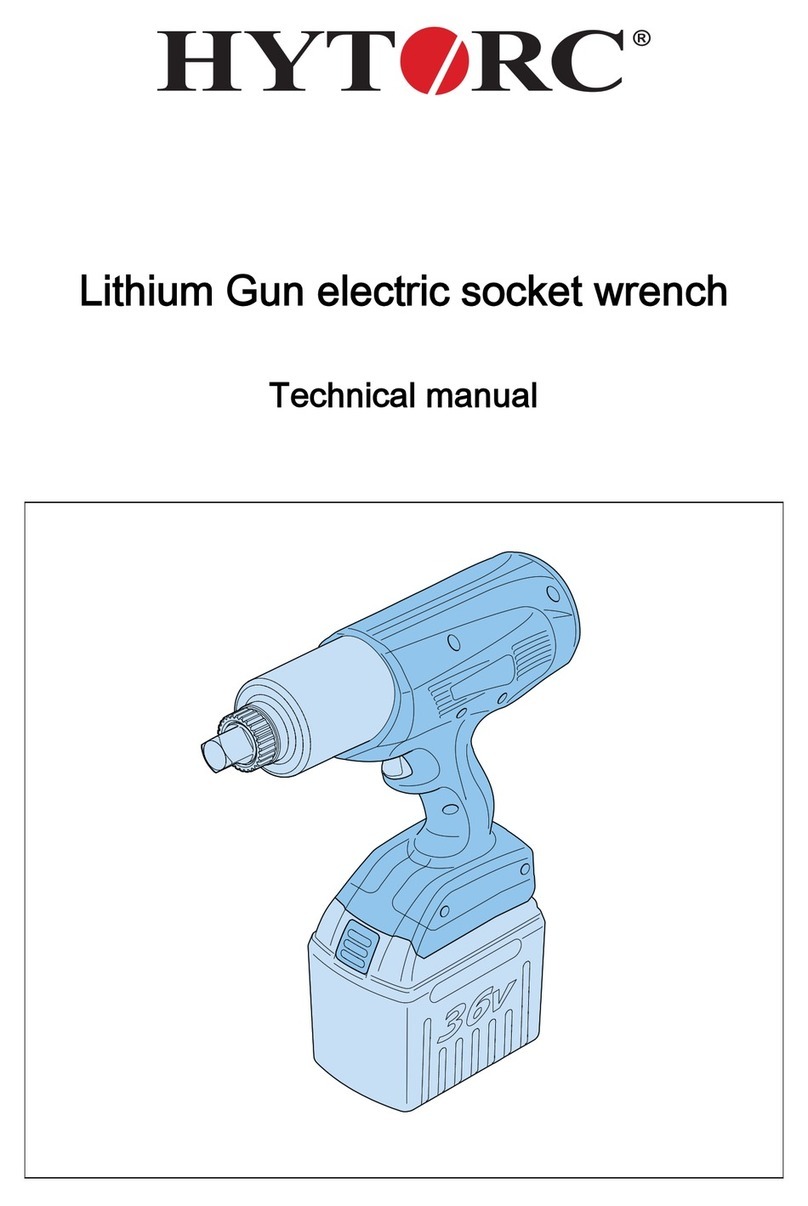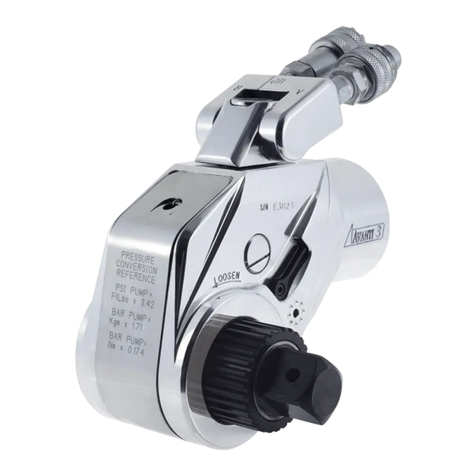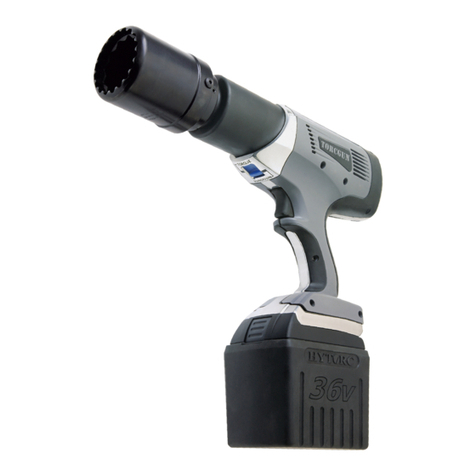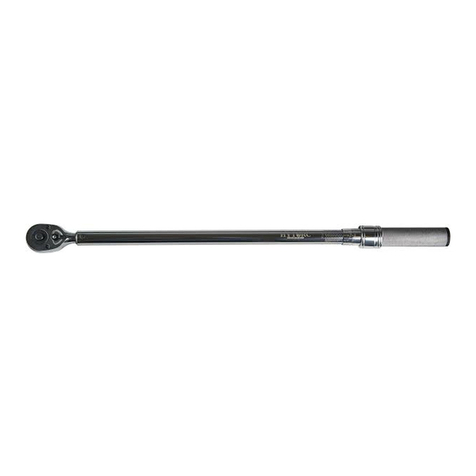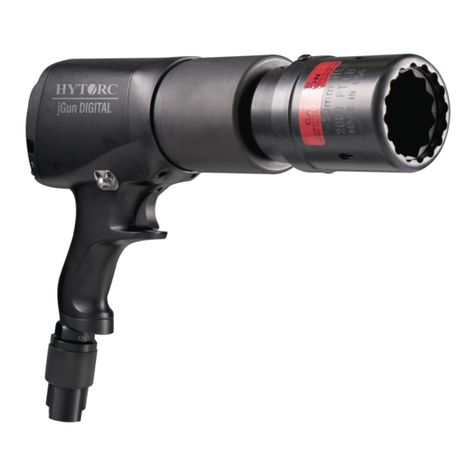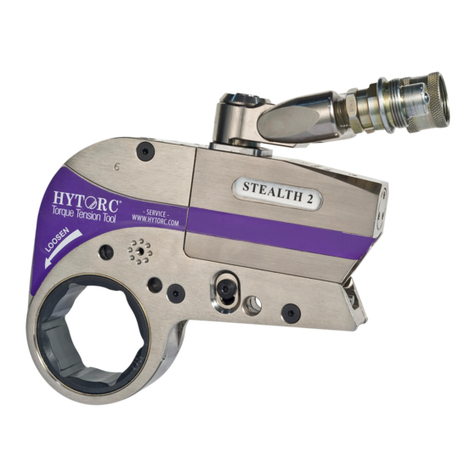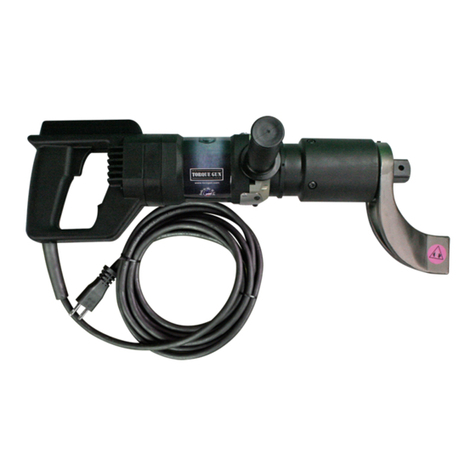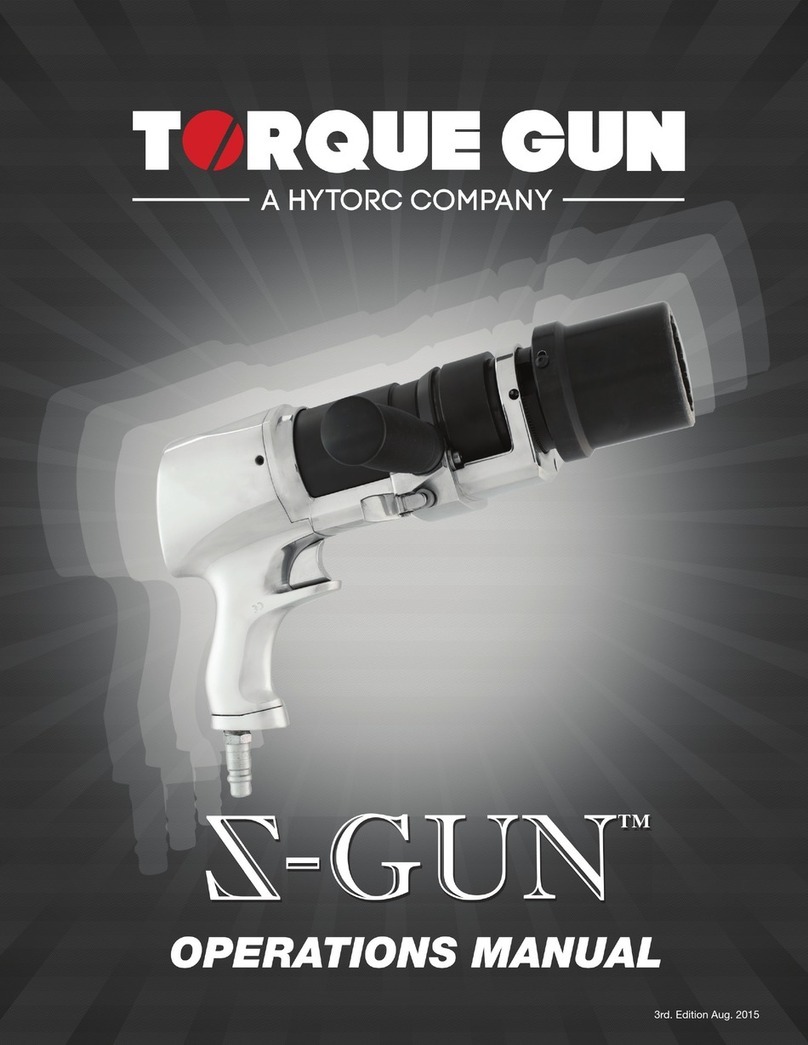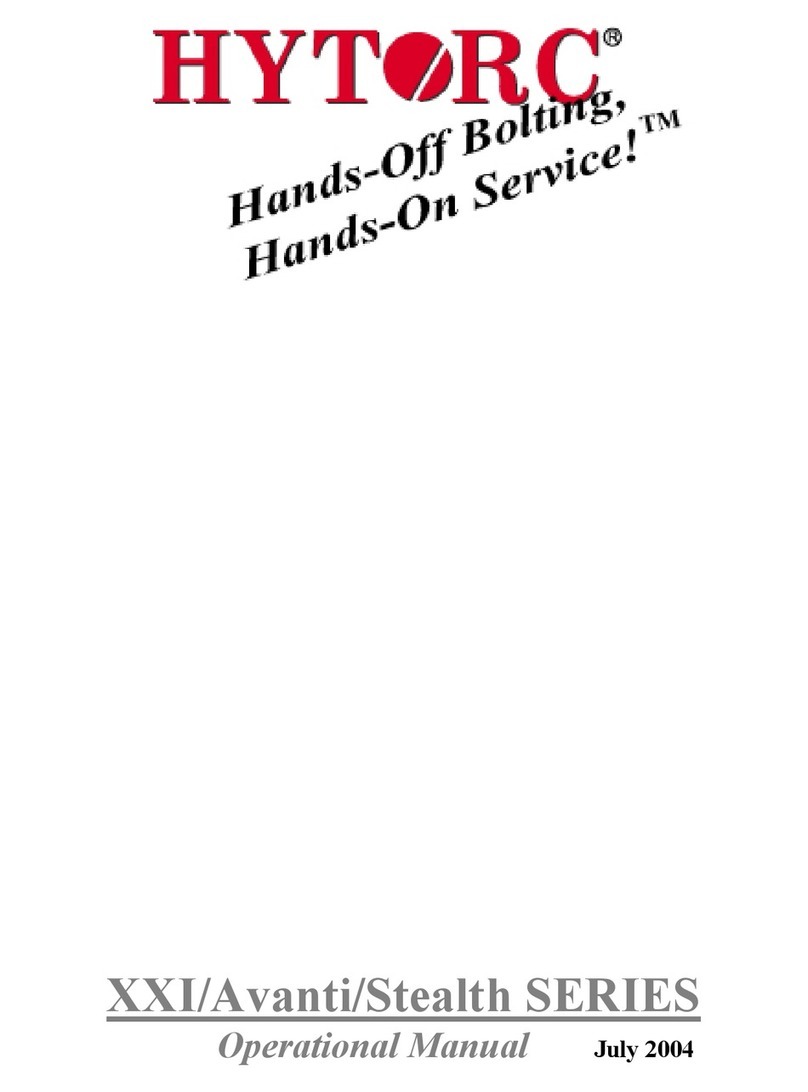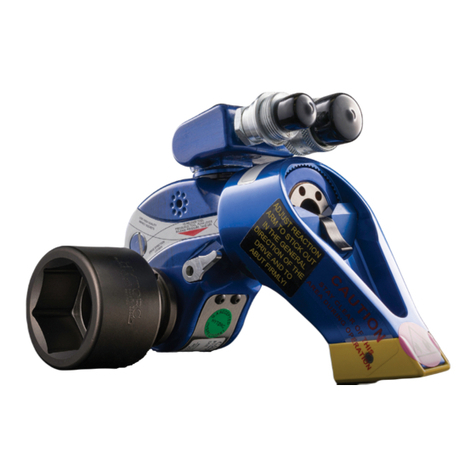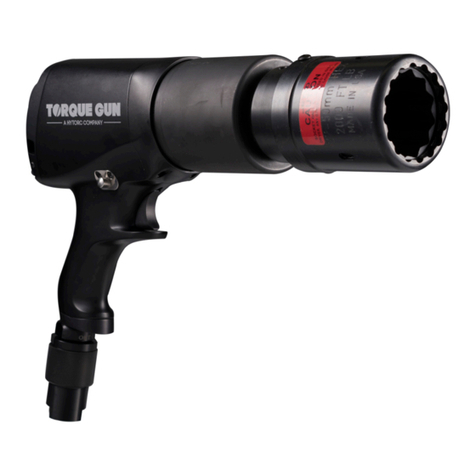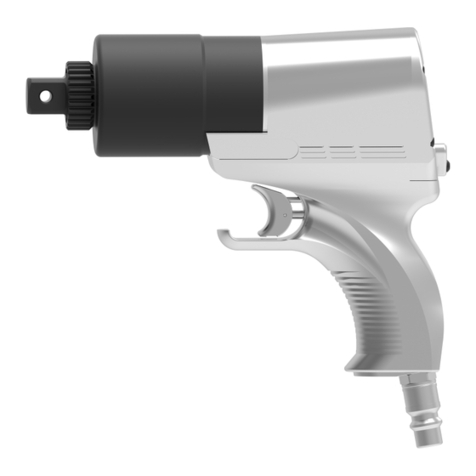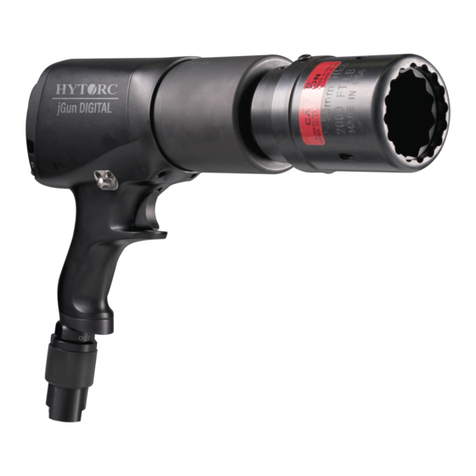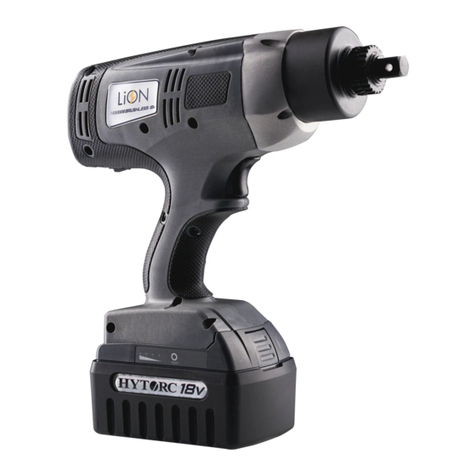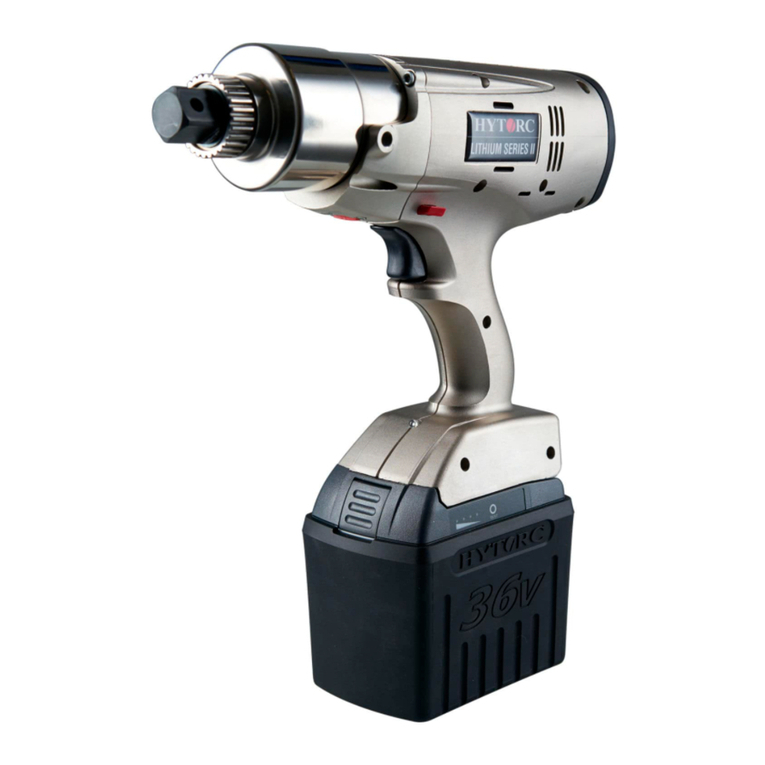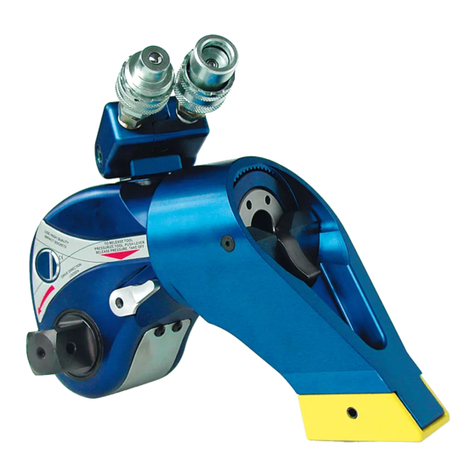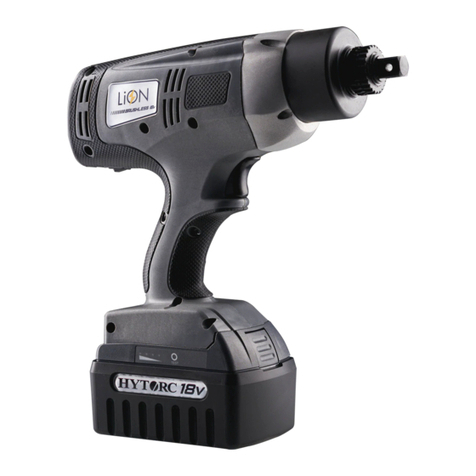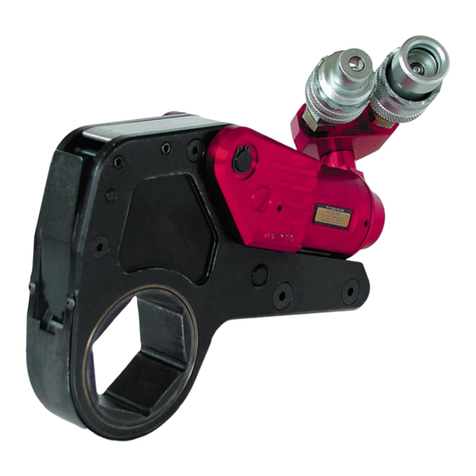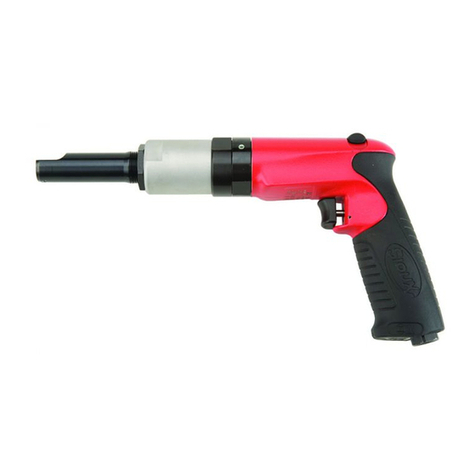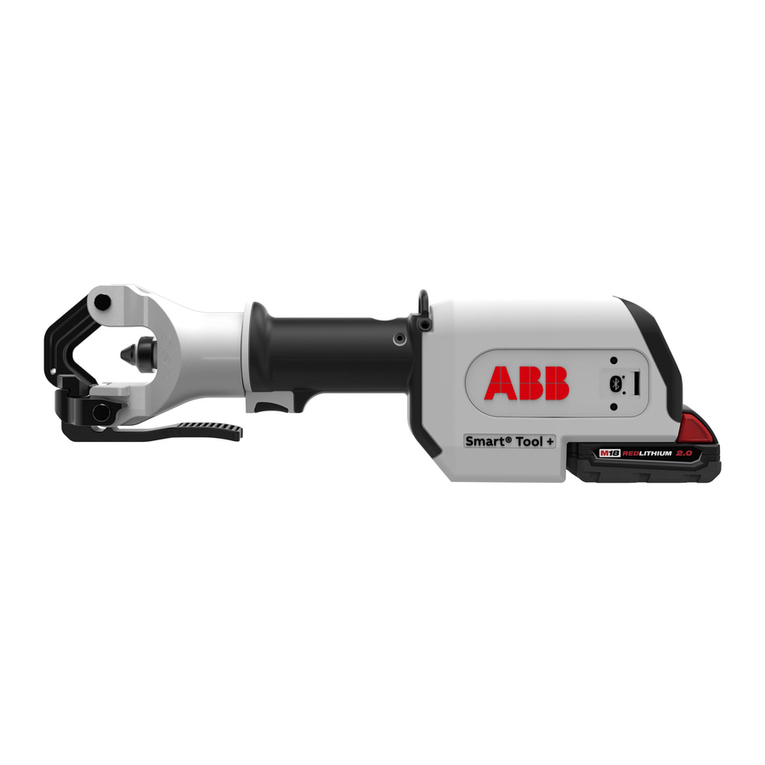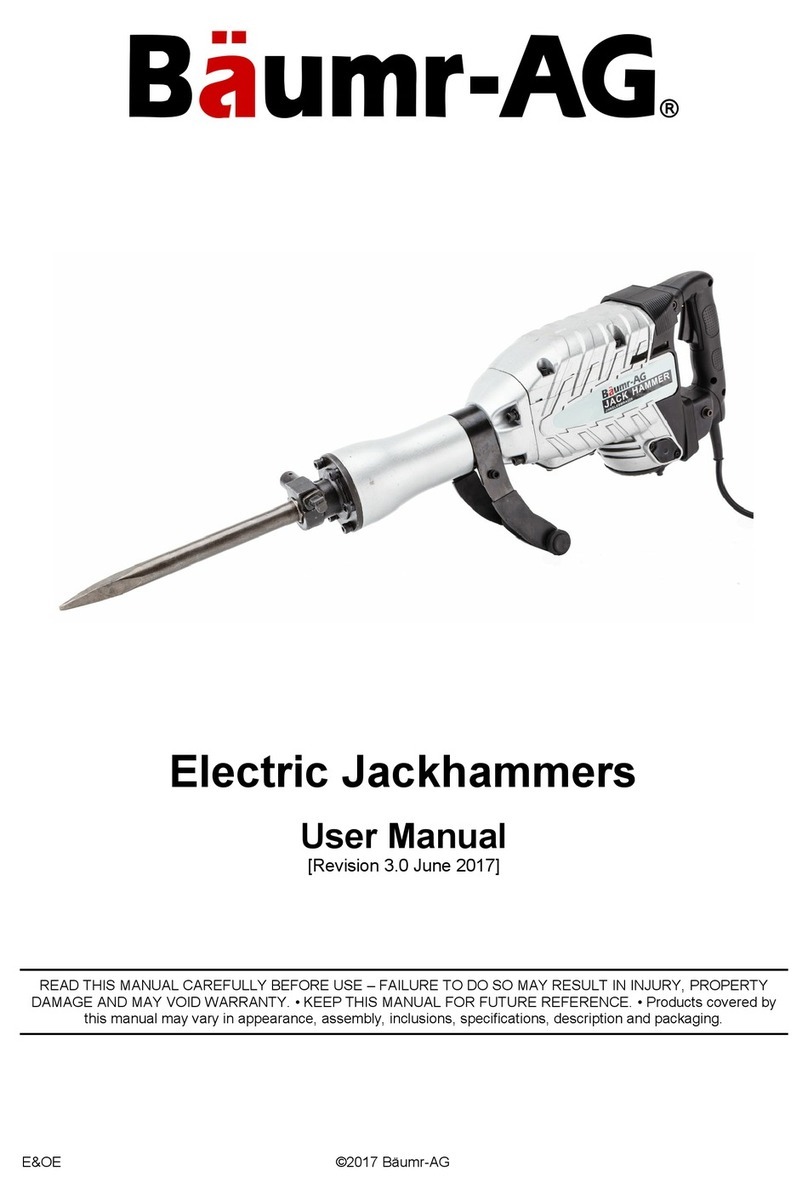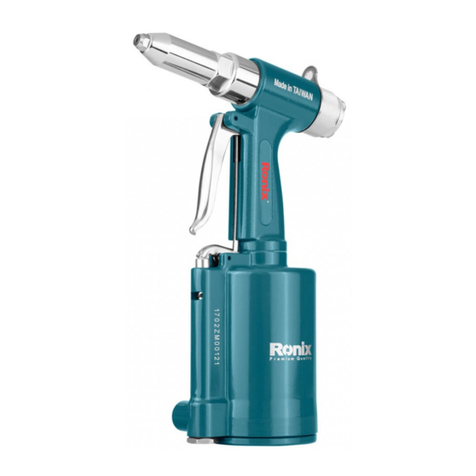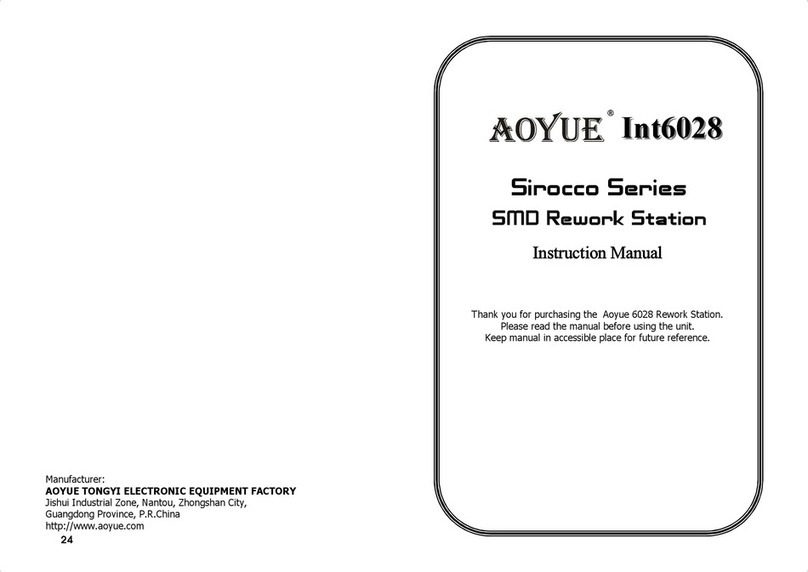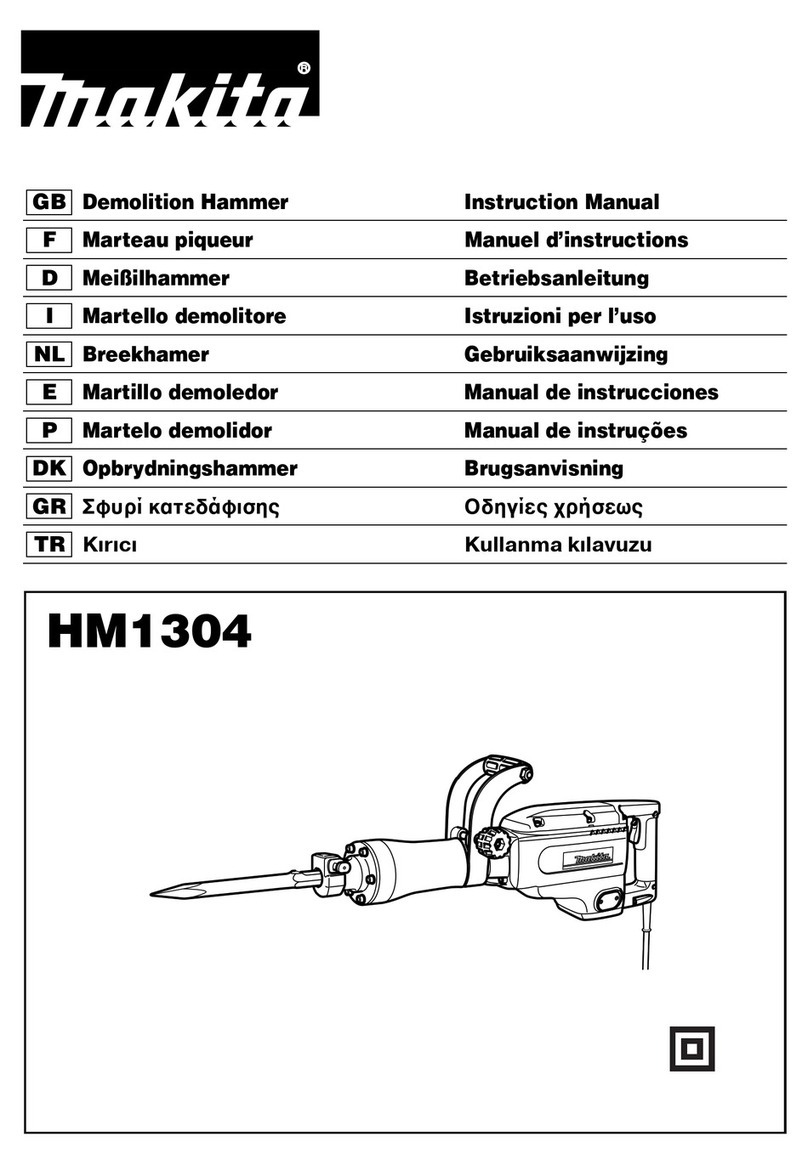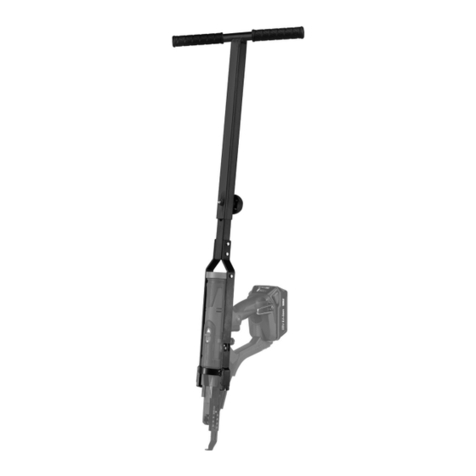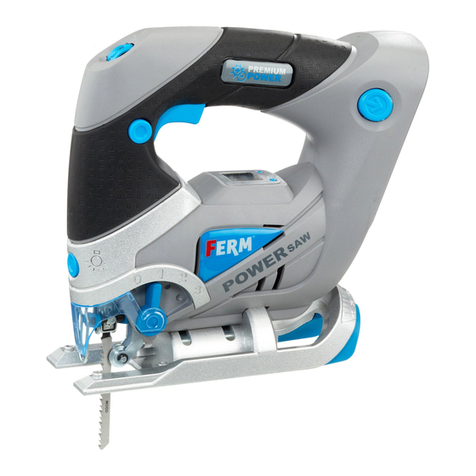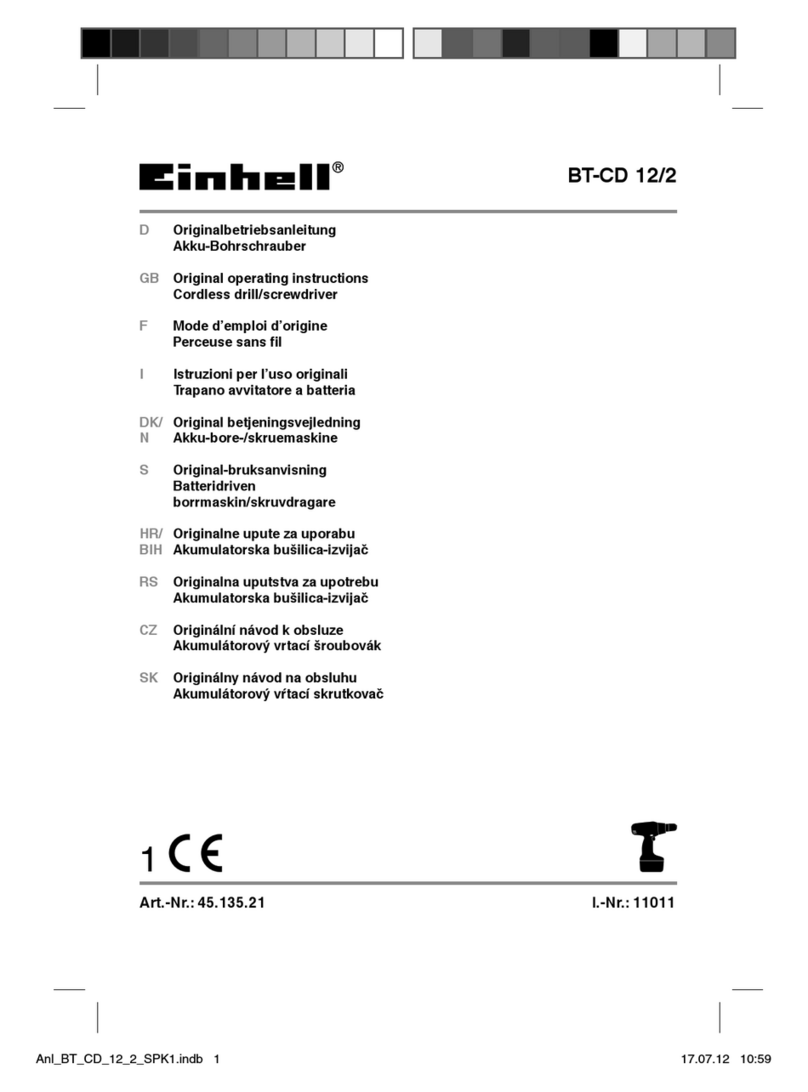
Models
jGun® SINGLE SPEED:
J-.25, J-.5, J-1, J-3, J-5, J-8
jGun® DUAL SPEED:
J-A.5-AP, J-A1-AP, J-A3-AP,
J-A5-AP, J-A8-AP
Technical Certifications
For a complete EC declaration of conformity or if you
require any further assistance please call your local
HYTORC Representative or 1-800-FOR-HYTORC
(1-800-367-4986). Please visit us at HYTORC.com.
5002282
EN ISO 12100-1:2011
EN ISO 12100-2:2011
EN ISO 14121-1:2007
EN ISO 11148-6:2012
EN ISO 4414:2010
EN 61310-2:2008
EN 61310-3:2008
ISO 3744:2011
Notice. The information contained in this document is subject to change without notice. HYTORC makes no warranty of any kind
with regard to this material, including but not limited to, the implied warranties of merchantability and fitness for a particular purpose.
HYTORC shall not be liable for errors contained herein or for incidental or consequential damages in connection with the furnishing,
performance, or use of this material. It is further recommended that the end-user or repair technician insure they have obtained and
are familiar with the latest revision of the manual for the equipment outlined in this document.
Restricted Rights Legend. Use and duplication of the information contained within this manual is limited to the purchaser, end user,
or licensed HYTORC representative. It is recommended that proper training for the equipment outlined in this manual be conducted
by a HYTORC-authorized training representative for any person who is operating or repairing the equipment outlined in this docu-
ment. Modification of, or disclosure by any other agency or representative is strictly forbidden.
Product Modifications. HYTORC DOES NOT ALLOW any of the products listed in this manual to be modified by any end user without
exception. Should an application require a modification to the tool, or any of the standard accessories please consult with your local
HYTORC representative and they will be able to obtain the assistance for any modification that may be required.
jGun® is a registered trademark of HYTORC.
Copyright © 2020 HYTORC All Rights Reserved. Reproduction, adaptation, or translation without prior written permission is prohib-
ited, except as allowed under the copyright laws.
Warranty. The jGun® Pneumatic Torque Tools (SINGLE SPEED and DUAL SPEED Models) have a one-year limited warranty. Every
tool is tested before leaving the factory and is warranted to be free from defects in workmanship and materials. HYTORC will repair or
replace, without charge, any tool which, upon examination, proves to be defective in workmanship or materials for one (1) year after
the date of purchase. This warranty does not cover damage resulting from repairs made or attempted by unauthorized repair facilities.
The repair and replacement remedies described herein are exclusive. In no event shall HYTORC be liable for any incidental, special,
or consequential damages, including loss of profits. This warranty is exclusive and in lieu of all other warranties or conditions, written
or oral, expressed or implied for merchantability or fitness for particular use or purpose. This warranty gives you specific legal rights.
You may also have other rights that vary from state to state and province to province. In those states that do not allow the exclusion
of implied warranties or limitation of incidental or consequential damages, the above limitations or exclusions may not apply to you. If
you have questions about the warranty, contact our customer service center at 201-828-5270.
Printed in the USA. June 2020
TECHNICAL CERTIFICATIONS
NOTICE OF PROPRIETARY RIGHTS: HYTORC Division UNEX Corporation (“HYTORC”) is the owner of all content included in this document and all right, title and interest to such content shall
remain with HYTORC. COPYRIGHT NOTICE: © 2020 HYTORC. Any unauthorized use or distribution of any material from this document, without HYTORC’s written permission, is strictly prohibited.
TRADEMARK NOTICE: This document contains numerous registered trademarks and servicemarks of HYTORC in the U.S. and other countries. PATENT NOTICE: Products in this document are
covered by numerous registered and/or pending patents in the U.S. and other countries.
